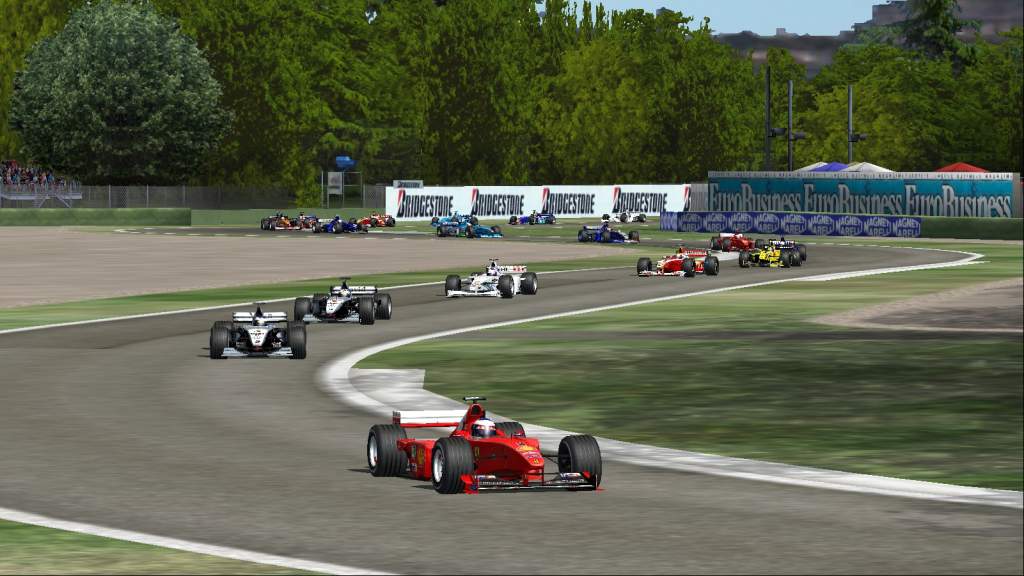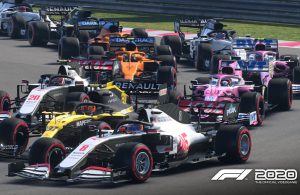Up Next

With Electronic Arts’ recent purchase of Codemasters and its IPs, including the rights to Formula 1 video games, it means we’ll see an ‘EA’ published F1 game for the first time in almost 20 years.
EA Sports shared game development rights with other studios and produced six games from 2000 to 2003, ending with F1 Career Challenge on consoles and F1 Challenge ’99-’02 on PC.
There are ideas and features in EA’s older games that have since appeared in newer F1 games, but equally there are some game mechanics that weren’t picked up in the years that followed.
That’s not to say every aspect of the series would or should be brought back, for example F1 2001 forced players to complete certain challenges before they could play grand prix mode and only three circuits could be used to begin with in quick race, with the rest needing to be unlocked by scoring a certain amount of championship points.
It may be almost two decades since EA had the rights to produce Formula 1 games and the studio that developed the console versions, Visual Science, doesn’t exist anymore. Here’s a look back at some of the memorable features – good and bad – from the last time EA was involved in releasing F1 games.
Interactive Pitstops
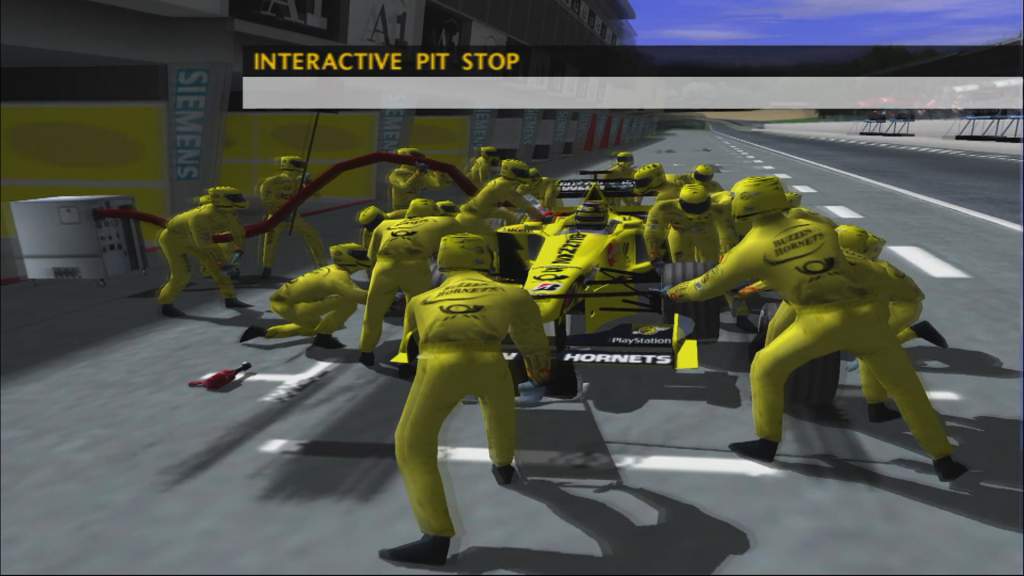
EA was the pioneer of interactive pitstops, a feature which Studio Liverpool later put into its games when it then had the exclusive F1 video game rights.
By comparison Codemasters has slowly made the pitstops less automated, with braking for the pit speed limit line, building the revs in order to leave your pit box and deactivating the car’s pit limiter all relatively new additions.
Even though Codemasters’ F1 games have long made players stick inside the white pit exit line, pitstops in EA’s games were more involved.
In F1 Career Challenge it is essentially a series of quick time events with players having to brake for the pit limiter line and then brake further and manually turn into your pit box before gearing up and accelerating away.
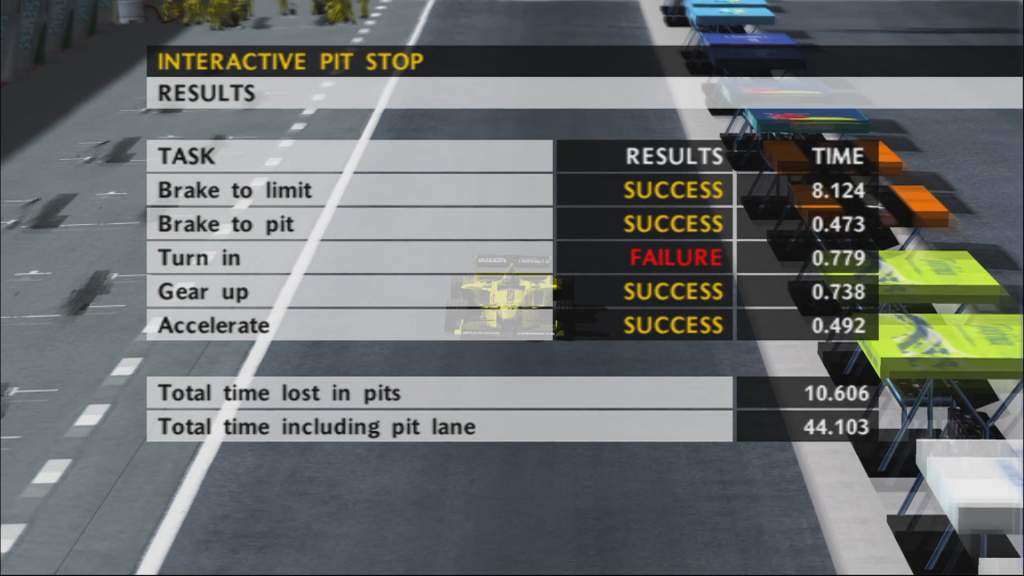
The cumulative time it took you to do those actions affected your overall time in the pit lane.
This way of making the pit stops less automated may not be to everyone’s taste and since then simulation racing games have been released that also require players to turn in and brake for their pit box. But these games have done it using the normal driving controls rather than a sequence of quick time button presses.
Regardless, greater control over your pitstops, whilst still having optional assists for lesser skilled players to automate the stops, would likely go down well with the F1 gaming community.
Stricter Yellow Flag Rules
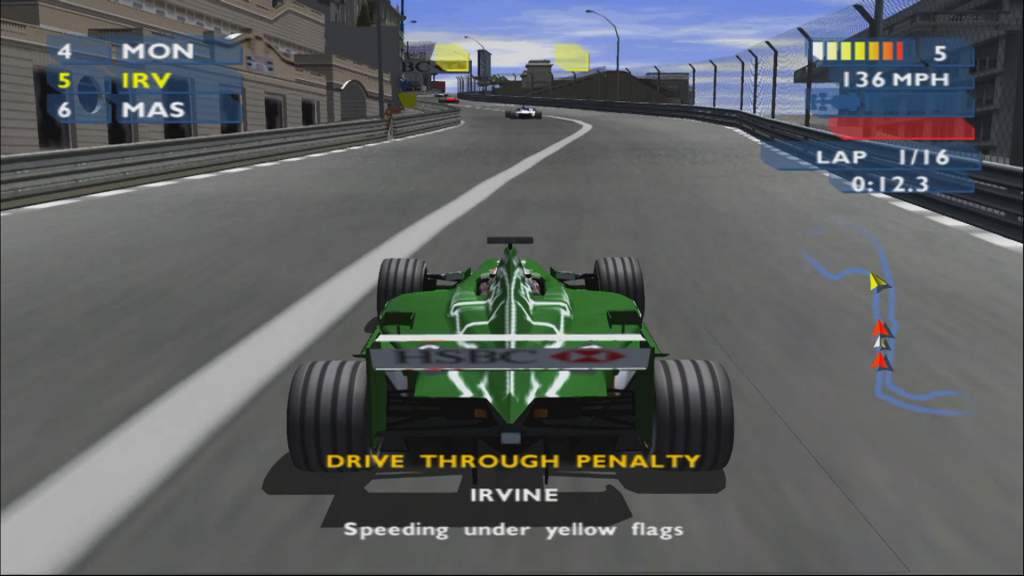
Another part of Formula 1 that was implemented in a much greater way in EA’s F1 games was yellow flags, specifically the fact that you had to slow down through yellow flag zones.
By comparison the only thing you can’t do when driving past yellow flags in Codemasters’ F1 games is overtake another driver, and if you do you’re given a small amount of time in which to let whoever you passed get back ahead of you.
On paper yellow flag rules were much more realistic in EA’s games than they are in the newer ones but that wasn’t quite the case.
The amount you had to slow down in EA’s games and the speed with which you had to react to yellow flag conditions made obeying the rules very challenging.
On F1 Career Challenge you quite easily jump up from last place to the top 10 within the first couple of corners at Monaco, however the inevitable chaos at the first corner meant that yellow flags would almost certainly be waved and you would be slapped with a drive through penalty.
A combination of EA’s full yellow flag rules and Codemasters’ leniency and better communication of the on track conditions would make the experience of completing a race, and driving past any stricken car that doesn’t trigger a full or virtual safety car, much more realistic.
If that was implemented into qualifying as well then yellow flags would be authentically damaging to a good qualifying lap, and whilst the AI slow down under yellow flags in qualifying on F1 2020 there is little forcing players to do the same.
Upgrades and Rewards
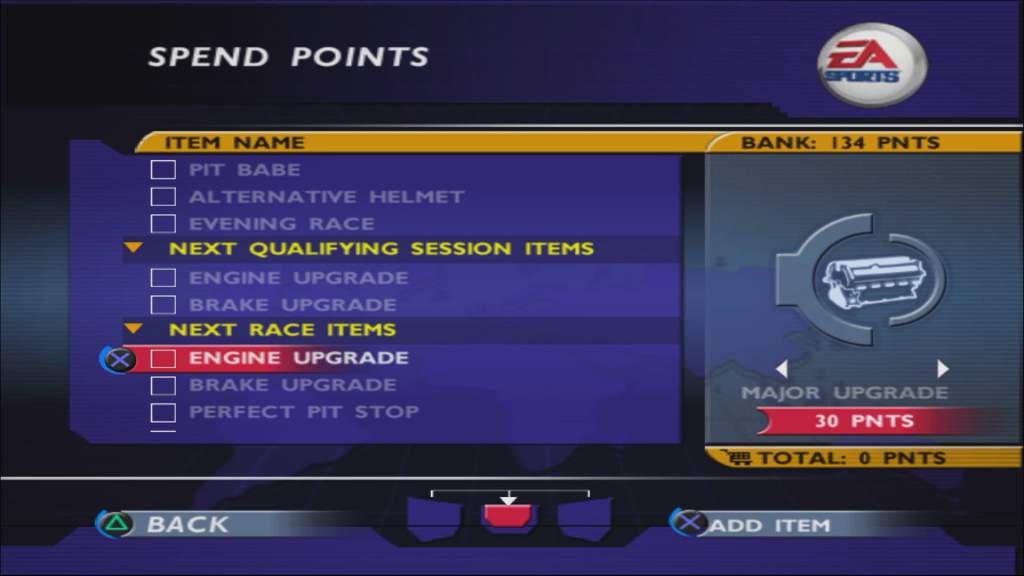
One of the biggest additions to Codemasters’ F1 games in recent years is a car upgrade system for career mode which first appeared in F1 2016.
By playing through the career mode you earn resource points which you can use on car upgrades, with rule changes and the ability to change engine supplier from one season to the next all being more recent features.
EA had its own points earning and car upgrade systems in F1 Career Challenge with varying levels of engine, brakes and traction control upgrades all available.
The difference is that some of the upgrades were session specific, such as only applying to your car in qualifying.
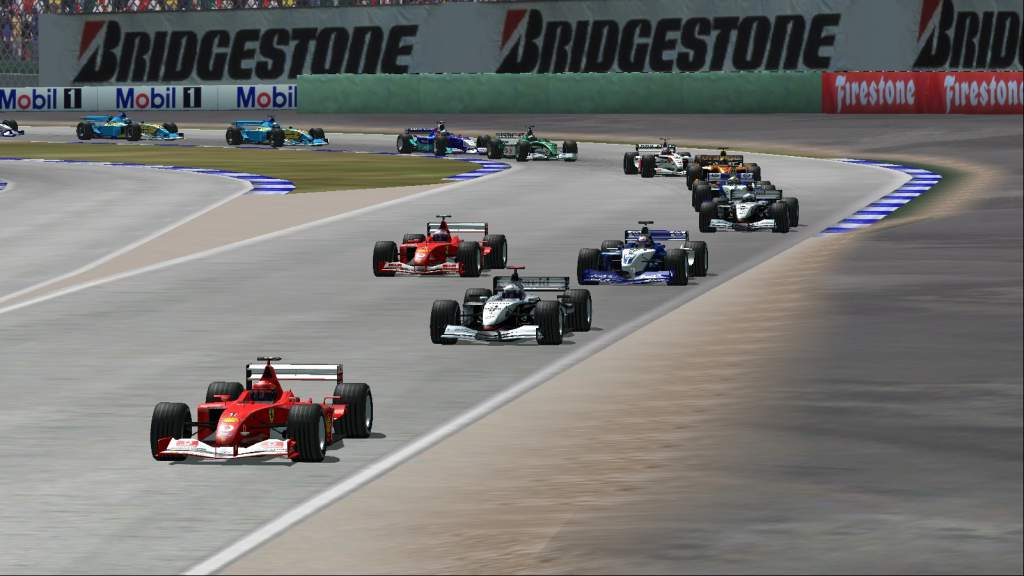
Also each of the purchased items only lasted for one race, meaning you would have to save up points and prioritise which races to use your car upgrades at.
Not all of what you could spend your points on were car-related upgrades, or even upgrades at all as the ability to hold a race in the evening, have pit stops done perfectly without any player input and making your car invulnerable were all things you could buy on a race by race basis.
The upgrades exemplify the comparatively arcade nature of EA’s console F1 games, but the more wacky upgrades could be integrated into the upcoming F1 games as additional features in the grand prix mode.
With the car development tree in Codemasters’ F1 games remaining relatively unchanged since F1 2017 it could certainly do with a shake up, although reverting to a F1 Career Challenge type system for the career modes would certainly be a downgrade over what currently exists.
Challenge Mode
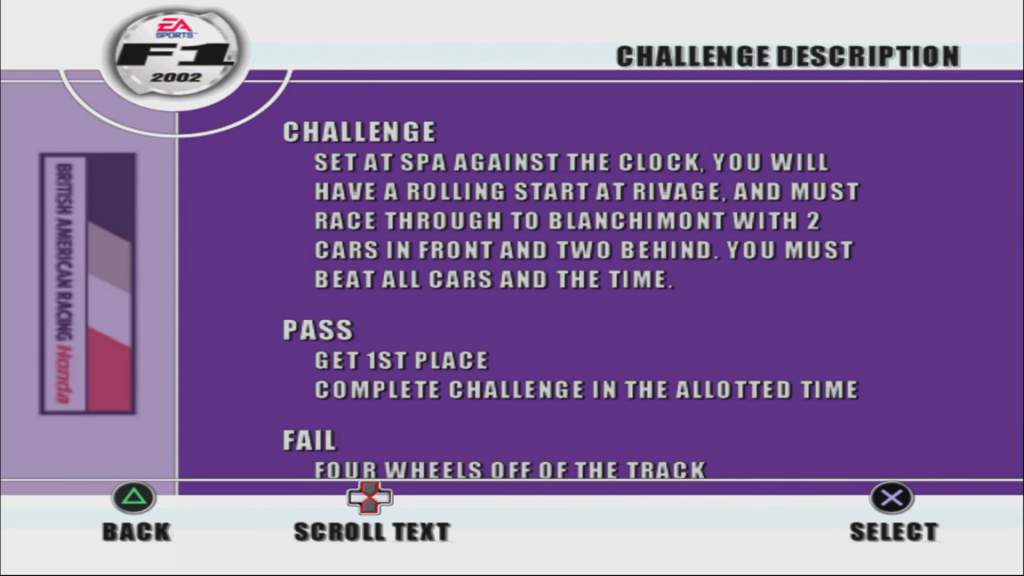
Finally a game mode that EA included in its games but hasn’t been in a Codemasters F1 game since F1 2014, is a challenge mode.
In F1 2013 and F1 2014 this was called a scenario mode, but in both Codemasters’ and EA’s games they were short challenges where you drove a certain car and had to do something within a certain time limit or reach a certain track position.
F1 2001’s challenges were designed more around teaching the fundamentals of driving and Formula 1.
They start off explaining actions as simple as accelerating and braking but would later teach how to handle changeable weather conditions or driving a damaged car.
F1 2002 had challenges themed around each team and were more comparable to the scenario mode seen in Codemasters’ F1 games.
That being said Codemasters’ scenarios were usually longer than EA’s challenges and some were references to events in real F1 races.
Again Codemasters improved upon EA’s earlier idea, but the return of scenario mode has been regularly requested since it was dropped so it would be welcomely returned if it was re-introduced.


